Honda Odyssey Vs Toyota Sienna: Which Minivan is Right for You?

Buying a minivan is, for most people, the vehicular equivalent of eating your vegetables. We know they’re healthy and good for us but we can’t shake the feeling we’d rather have a piece of cake. Or an SUV, in this case.
Honda and Toyota have been churning out minivans in this form since the mid-’90s, when the former did away with its original Odyssey that had four car-like swinging doors and the latter binned its weird-but-wonderful mid-engined Previa. Situating themselves at the upper end of the minivan price market, these two manufacturers have carved out a niche that enjoys good customer loyalty and decent profit margins.
Get a Quote on a New Toyota Sienna or Honda OdysseyHere in the second decade of the century, these two have once again diverged. The Sienna’s gone all-hybrid, with optional AWD; the Honda sticks to a more traditional approach. Does one ring the parent bell louder than the other? Are there features in these things that make them more bearable to drive? Is it possible to get Jimmy to eat his vegetables?
We can’t help you with the last one. But the rest? That’s what we’re here for.
Honda Odyssey vs Toyota Sienna Comparison
Powertrains
Honda Odyssey: Regardless of which trim you select, shoppers will find the same 3.5-liter V6 engine under the hood, making 280 horsepower and 262 lb-ft of torque and sending it exclusively to the front wheels. The 10-speed automatic transmission with paddle shifters is now standard in the 2020 model year Odyssey.
Toyota Sienna: For the first time in a long while, there’s a four-cylinder option in the minivan market. Toyota has tossed its 2.5-liter four-pot under the blunt hood of the Sienna, with no less than three electric motors to bolster it. Total horsepower is down to 245 hp, and because of differing power curves, Toyota doesn’t quote a maximum combined torque figure. The gas engine produces 176 lb-ft on its own; the front-mounted pair of electric motors hit 199 lb-ft, while the smaller unit out back is good for 89 lb-ft. The Sienna draws power from a 1.9-kWh nickel-metal-hydride battery. Shifting duties are handled by the usual electronic continuously variable transmission (CVT).
SEE ALSO: The 8 Best Winter Tires and Why You Absolutely Need ThemBottom Line: Available AWD is a huge advantage for the Toyota, and making it an option on every trim is smart. On the flip side, the Honda has more power—and is lighter too—making it the quicker model. Neither is a hot rod, but the Big H is more likely to merge into traffic with greater aplomb. If AWD is a priority for you, definitely go for the Sienna, but the Odyssey should do just fine in the snow with a good set of winter tires.
Family-Friendly Features
Honda Odyssey: Magic Slide second-row seats appear on trims EX and higher, allowing for side-to-side sliding of the two middle chairs for maximum separation of warring siblings or slid fore-and-aft for easy reach back to a kiddo in a baby seat. Easy-to-clean leather shows up on EX-L, a trim which is $7,000 more than a base LX. Sadly, the very clever built-in vacuum available in higher trims is gone for now—the supplier went bust.
ALSO SEE: Where Is Honda From and Where Are Hondas Made?Toyota Sienna: That same supplier is out of the picture for the Sienna too. We know, it sucks—or rather, doesn’t. Even on the base LE model, a raft of USB charging ports (seven) are found in the Sienna, including some in the way-back third row. This is in addition to a yaffle of 12V power outlets meaning that devices will be charged up and everyone will be happy. Every model features manual second-row sunshades; Limited and Platinum models include them in the third row too. Cupholders, storage areas, and cubbies abound to the point that if one of the kids loses their milkshake, you may not find it until it is too late.
Bottom Line: Honda’s too-useful Magic Seat system seals its win here, even if the feature is not available on the base trim. Allowing for either a bench of three, a smaller bench of two, or a pair of captain’s chairs, these seats are very versatile and their side-to-side sliding function really helps when securing little kiddos into a rear-facing (or any, really) car seat.
Technology
Honda Odyssey: The LX trim comes with a 5.0-inch color LCD infotainment system. The 8.0-inch touchscreen is available EX trim onwards and is equipped with Apple CarPlay and Android Auto. The 8.0-inch system also gets remote CabinControl compatibility. A second-row 10.2-inch high-res screen with BluRay and HDMI capability is reserved for the Touring and Elite trims only. The CabinTalk PA system, which allows the driver to admonish rear seat urchins by piping their voice through the stereo speakers, is also available on the top two trims, along with CabinWatch, which permits easy visual monitoring of rear seat passengers and even deploys infrared LEDs for visibility in low-light situations.
Climate control is available right from the base LX variant but higher variants come equipped with a tri-zone system. The EX-L trim is the most balanced trim of all. You get most features there, including a power-lift tailgate, rear entertainment system as an optional extra and the larger infotainment system along with the tri-zone climate control.
ALSO SEE: 2019 Subaru Ascent vs Honda Pilot vs VW Atlas: 3-Row SUV ComparisonToyota Sienna: The trims and options on the Sienna are neverending. But here is the short version. The 9.0-inch touchscreen is standard on all Sienna trims as is the three-zone climate control. Apple CarPlay and Android Auto are also standard. The 11.6-inch middle-row entertainment system is optional from the XLE onward. That same trim as well as the XSE can also come fitted with a JBL audio system complete with a subwoofer so you can really blast Baby Shark on the way to daycare. (It’s standard on Platinum and Limited.) Toyota also allows yelling at third-row minions via speaker, but they call it EasySpeak.
In terms of safety, Toyota offers its safety suite as standard, which includes collision mitigation with pedestrian detection, lane departure with steering assist and radar guided adaptive cruise control. Blind-spot monitoring and rear cross-traffic alert are also standard.
Bottom Line: By dint of its newness and the increasingly common situation of youngins having access to mobile screens—rendering in-car entertainment less important—we’re giving the nod to the Toyota.
Cabin Space
Honda Odyssey: Sunroof-less vans have 40.7 inches of headroom in the front row, with a penalty of two inches should a shopper select the glass portal. Headroom in the second and third rows are 39.5 and 38.3 inches respectively. These two vans have essentially the same width, but the Odyssey is 3.0 inches longer. Be sure to account for that if you have a garage or tight condo parking space.
ALSO SEE: Honda Pilot vs Acura MDX: Which SUV is Right for You?Toyota Sienna: Front row passengers will enjoy 40.0 and 62.4 inches of head- and shoulder room, respectively. Shave a couple of inches from that first measure if you pop for the expansive glass roof. Second- and third-row ankle-biters will have to make do with 39.3 and 37.4 inches of headroom. One thing to note is that despite the dual moonroofs, the headroom in the Sienna remains unaltered. Ungrateful whelps.
Bottom Line: Headroom, legroom – heck, allroom – is as vast in the Toyota as it is in the Honda. Even if your brood consists of several future NBA stars, all hands will find plenty of stretch-em-out room in either of these big rectangular boxes.
Safety Equipment
Honda Odyssey: Starting with the 2021 model, every Odyssey now features the Honda Sensing suite of driver assists standard. The safety suite includes helpful tools like collision mitigation braking, blind-spot detection, and lane-keeping sensors. Adaptive cruise control helps maintain a safe following distance behind detected vehicles in highway driving situations.
Toyota Sienna: Every family van from Toyota is equipped with the company’s Safety Sense 2.0, kit that groups lane departure systems and dynamic radar cruise control. Lane assists, rear cross-traffic alert, and blind-spot warning are all present too. As in the Odyssey, a raft of airbags are packed into the dash, seats, and roof.
Bottom Line: It’s newer and its safety list is longer: it’s another win for the Sienna.
ALSO SEE: Acura RDX vs MDX: How Are the Crossovers Different?
Cargo Capacity
Honda Odyssey: Binning all seats save for the driver and front-row passenger opens up 144.9 cubic feet of space. Leaving the second row in place but sliding the chairs to their forward limits exposes 92 cubic feet of room. Honda notes a 4’ x 8’ sheet of plywood will fit in the cargo area. This big box can tow up to 3,500 lb.
Toyota Sienna: Toyota made the surprising move of not allowing the Sienna’s second-row to be removed. Due to this, the maximum cargo space with the seats in place is 75.2 cubic feet. Move them up as much as you can and you’ve got 101 cubes of room. Despite the move to a hybrid drivetrain, it retains the same 3,500 lb tow rating as the previous van and the Odyssey—you’ll need to spec the towing prep kit, though.
ALSO SEE: Toyota Highlander vs 4Runner: Which SUV is Right for You?Bottom Line: The Toyota seems to have an edge in terms of outright measurement, but be sure to bring along some detritus that represents the activities for which you’ll actually be using the van – hockey bags, big totes, antique vases – when test driving. The shape of a cargo area is often just as important as its total volume.
Fuel Economy
Honda Odyssey: Honda’s van is rated at 19 mpg in city driving and 28 mpg on the highway cycle. The combined figure stands at 22 mpg. The Odysseys have a 19.5-gallon fuel tank and run just fine on regular unleaded.
Toyota Sienna: Front-wheel drive examples of the Sienna should get 36 mpg no matter where you measure it: highway, city, or combined. Selecting all-wheel drive exacts a penalty, as you may expect, but not much. In the city, pilots of an AWD Sienna will find their ride getting 35 mpg. The highway figure stays the same, thus the average dips to—you guessed it—35 mpg.
Bottom Line: Who doesn’t love a 50-percent boost in fuel economy?! Toyota’s bullet train-aping Sienna notches up another win.
ALSO SEE: Honda Passport vs Pilot: Which Honda SUV Suits Your Lifestyle Better?Style
Honda Odyssey: It’s a box.
Toyota Sienna: It’s a box.
Bottom Line: Okay, that analysis may be slightly rude, but it is true. Neither the Odyssey nor Sienna is likely to set any hearts aflutter, no matter how much manufacturers try to pawn them off as cool (see: old ads for Sienna in SE trim billing it as a swagger wagon). Forced to choose, the Honda’s schnoz looks slightly better than the big mouth Toyota, and Honda has finally figured out how to hide the sliding door tracks along Odyssey’s flanks. But, really – any selection here is like picking between broccoli and cauliflower.
Pricing
Honda Odyssey: Starting at a $30,790 sticker price, the Honda quickly scales the financial food chain before topping out at $47,420 for a loaded Elite model with the 10-speed automatic transmission. It is worth noting that even this costly example is still a front-wheel-drive van since all-wheel-drive is not currently available at any price. Volume EX trim, with Honda Sensing and those Magic Slide Seats, checks in at $34,790.
Toyota Sienna: The least expensive Sienna, the L model, bears an asking price of $31,640. A front-drive Limited Premium trim rises to $48,055. Adding all-wheel drive here is a $1,360 proposition, pushing the sticker uncomfortably close to $50,000. Popular LE trim, comparable to Honda’s EX, costs $34,460. Asking for an LE with power going to all four wheels costs $2,540 down at this end of the Sienna food chain.
Bottom Line: Using objective measures, the Odyssey is cheaper at just about every step of the totem pole. Comparably equipped, the Honda will be ever so slightly cheaper than the Toyota. Hey, every penny counts, especially when soccer registration is due.
The Verdict: Honda Odyssey vs Toyota Sienna Comparison
It’s tough to go wrong with either of these practical rigs if your vehicular goal is to schlep as many people and/or stuff at one time as possible. Both offer similar interior space, roughly the same level of kit, and their costs are within a stone’s throw of each other. Honda holds a slight practicality edge with its Magic Slide seats but they are not available on the base rig. Meanwhile, Toyota arguably enjoys a slim edge in the arena of safety since it includes driving aids on its cheapest van while Honda does not. The Toyota is also available with all-wheel drive, which Honda doesn’t offer on the Odyssey.
Shop carefully, decide which features are important, and make sure the overall cargo area shape meets your needs. And don’t forget to eat your vegetables.
Become an AutoGuide insider. Get the latest from the automotive world first by subscribing to our newsletter here.

Living in rural Canada, Matthew has immersed himself in car culture for over 30 years and relishes the thought of a good road trip. A certified gearhead, he enjoys sharing his excitement about cars and is very pleased to contribute at AutoGuide. Matthew is a member of Automotive Journalists Association of Canada (AJAC).
More by Matthew Guy



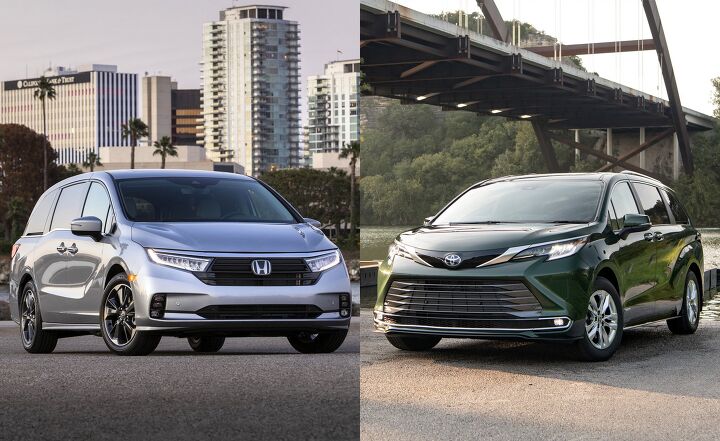
































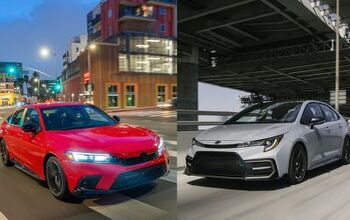
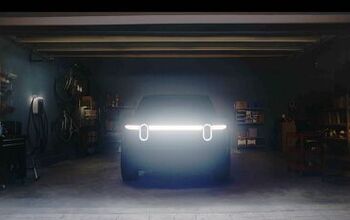
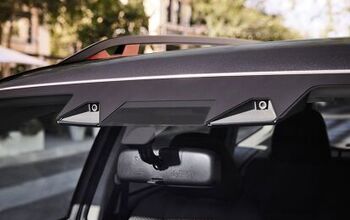
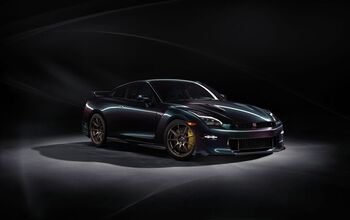
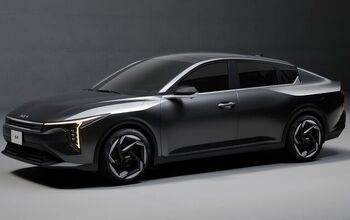
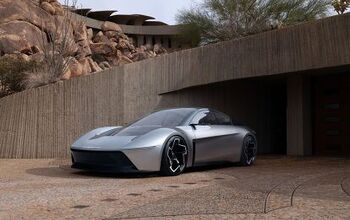


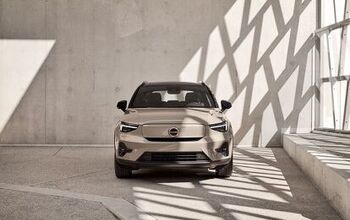

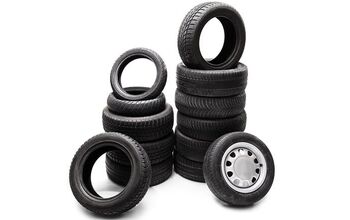
Comments
Join the conversation